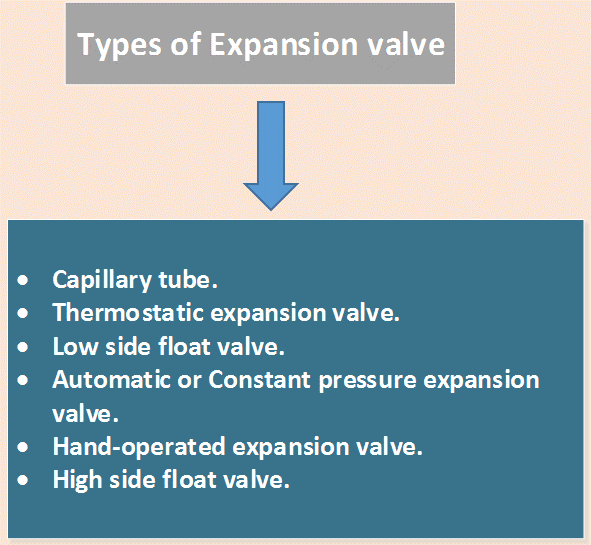Expansion valve is an important component of vapour compression cycle, which divides a refrigerating system into two pressure sides, i.e. high pressure side and the low pressure side. It is also known as throttling device. It is connected between the receiver (containing liquid refrigerant at high pressure) and the inlet side of evaporator (containing liquid refrigerant at low pressure).

Functions of Expansion valve
- It reduces the high pressure of liquid refrigerant to low pressure before being fed to the evaporator.
- It maintains the required pressure difference between high pressure and low pressure sides of the system, so that, the liquid refrigerant vapourizes at the desired pressure in the evaporator.
- It controls the flow of refrigerant according to the refrigeration load on the evaporator. In majority of applications, expansion devices work on the principle of expanding the refrigerant by throttling process, due to which, enthalpy of refrigerant remains same during expansion.
Types of Expansion valve
Following are the main types of expansion devices used in industrial and commercial refrigeration and air conditioning systems.
- Capillary tube.
- Thermostatic expansion valve.
- Low side float valve.
- Automatic or Constant pressure expansion valve.
- Hand-operated expansion valve.
- High side float valve.